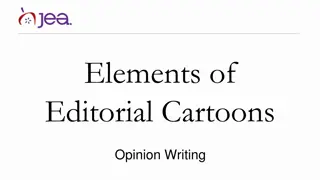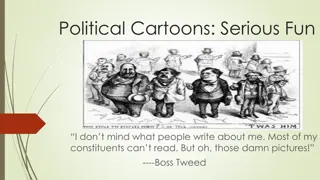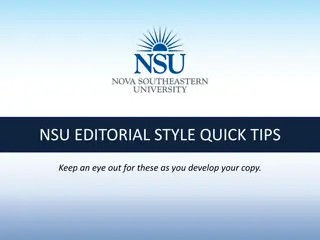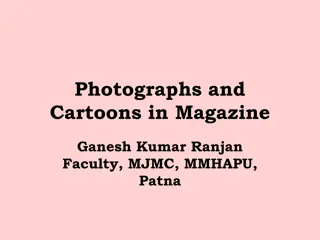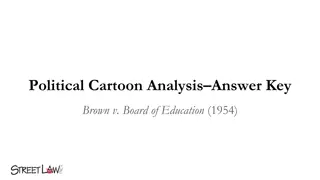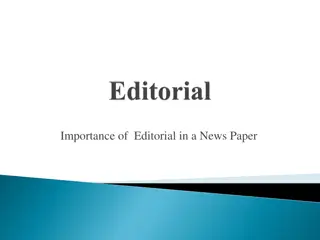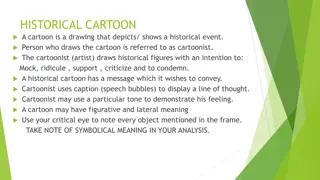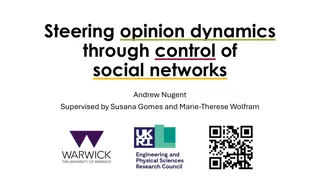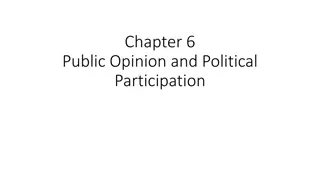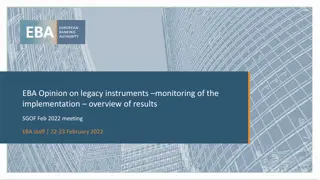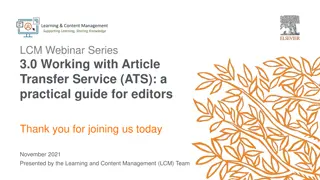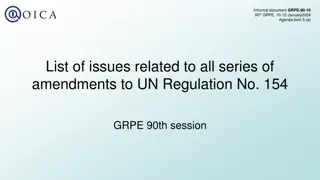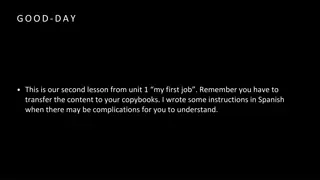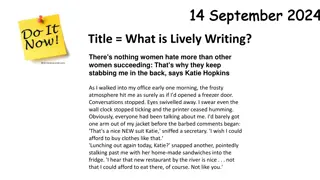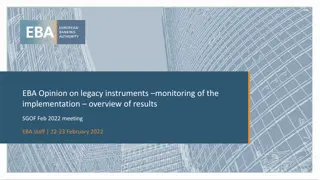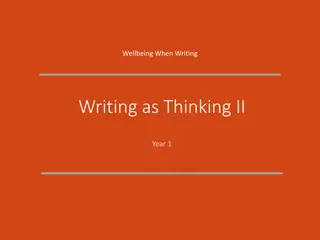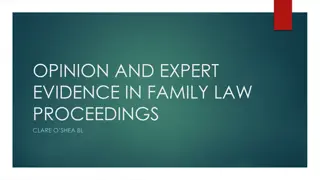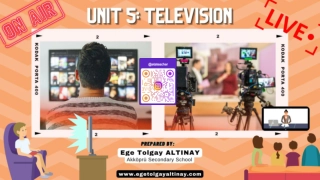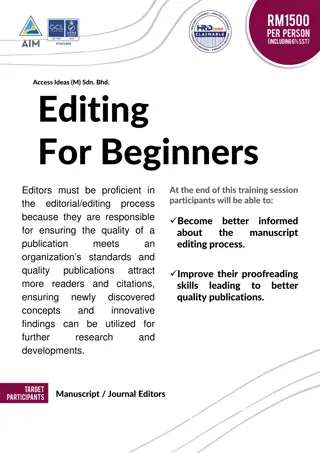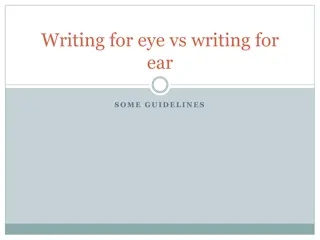Exploring Editorial Cartoons and Opinion Writing
Editorial cartoons and opinion writing are powerful mediums used to express opinions on various topics. Editorial cartoons convey opinions through visual imagery and minimal text, while opinion writing presents the author's stance on timely issues. When crafting an opinion piece, it is essential to state your opinion clearly, provide specific reasons, use effective transitions, and restate your opinion in the conclusion. Dive into the realm of expressing opinions with creativity and conviction.
Download Presentation

Please find below an Image/Link to download the presentation.
The content on the website is provided AS IS for your information and personal use only. It may not be sold, licensed, or shared on other websites without obtaining consent from the author. Download presentation by click this link. If you encounter any issues during the download, it is possible that the publisher has removed the file from their server.
E N D
Presentation Transcript
Editorial Cartoons & Editorial Cartoons & Opinion Writing Opinion Writing
Editorial cartoons Editorial cartoons express an opinion using a dominant visual image combined with a few key words.
Editorials Editorials express the writer s opinion or position on a specific topic, usually related to timely or recent events.
When writing an opinion or persuasive essay, think OREOS! OREOS!
1. State your opinion clearly. I believe the time-honored tradition of Groundhog Day is foolish and outdated. 2. Give specific and effective reasons. a. Groundhog day is linked to ancient traditions which used hedgehogs and badgers to predict weather patterns, not groundhogs. b. The heralded groundhog, Punxatawney Phil, has been correct in his predictions only 39% of the time, which means he is wrong more often than he is right! 3. Use effective transition words/phrases like because, therefore, for example, in conclusion, and for these reasons. 4. Restate your opinion in your conclusion.


